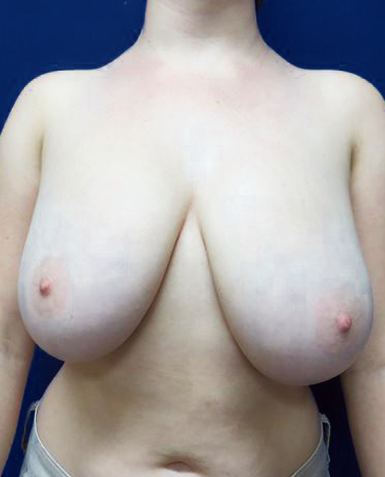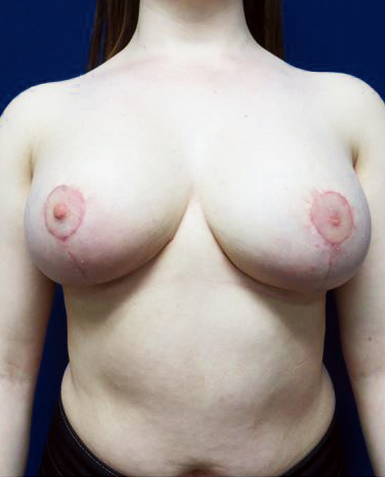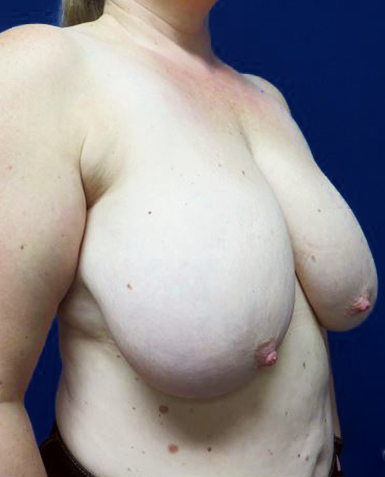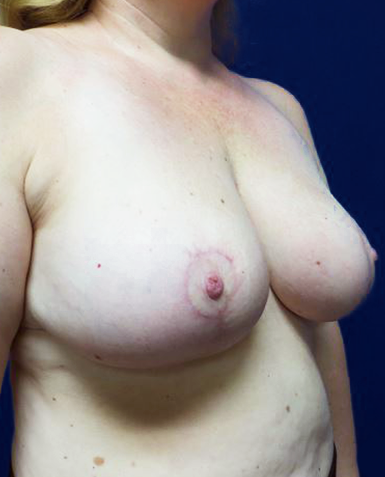Breast Reduction
Breast reductions, also known as reduction mammaplasties, are very popular cosmetic procedures. During this surgery, we remove excess fat, glandular tissue, and skin from the breasts and lift the breasts into a natural, youthful position. Breast reductions often help patients feel more confident while relieving discomfort caused by large breasts.
Breast Reduction Benefits:
Our goal during breast reduction surgery is to accentuate the body’s curves and proportions while repositioning the breasts into a youthful, lifted position. Poor breast reductions can result in obvious scarring, asymmetric, boxy, or flattened breasts.
What to Expect
Before your breast reduction, you will meet with your surgeon to discuss your goals and medical history. We’ll examine your anatomy, take photographs and measurements, and will make treatment recommendations. We will also answer your questions and discuss the procedure, potential risks and benefits, anesthesia, medications, and recovery instructions.
If you’re planning on having children and breastfeeding, we may advise you to wait until after pregnancy and breastfeeding before undergoing your procedure. This is very case-dependent, and something we’ll talk to you about. Breastfeeding is still possible for women post-breast reduction surgery depending on how the procedure is performed.
Procedure Day
On the day of your breast reduction, you will meet with your surgeon to address any last-minute questions and go over the surgical plan. We may run some quick diagnostic tests and will ask you to sign final paperwork. You will change into a surgical gown and our clinical staff will make sure you’re comfortable in pre-op. Next, an anesthesiologist will administer general anesthesia. The entire procedure takes around two to three hours. You will need somebody to drive you home, as you will not be able to operate a vehicle after anesthesia. We perform breast reductions as outpatient procedures at our accredited Northern Arizona SurgiCenter in Flagstaff.
Breast Reduction Incision Patterns
Based on your anatomy and surgical goals, we will pick one of three incision patterns: the anchor, the lollipop, or the donut. Through these incisions, we’ll remove excess breast glandular tissue, fat, and skin. Liposuction may be used to remove fat tissue. Based on your goals, we can also shape the breasts, address asymmetry, and reposition the nipple and areola into a more natural position. In some rare cases, we’ll transplant the nipple and areola to an ideal position.
- The Anchor (Inverted T): The anchor incision pattern involves three lines: one around the areola, one running vertically from the bottom of the areola to the crease, and one horizontal incision tucked under the natural breast contour. This pattern is most appropriate for patients who want to remove a significant amount of tissue, reposition the nipple and areola, address drooping or ptosis, or correct breast asymmetry.
- The Lollipop (Vertical): The lollipop incision pattern is similar to the anchor, however, we do not make a horizontal incision under the breast. This pattern is best suited for patients who want a mild to moderate breast reduction.
- The Donut (Periareolar): The donut incision pattern is the most discreet and is well-suited for patients who want very minor adjustments, however, it is more suited for breast lifts than breast reductions. This incision is hidden by the perimeter of the areola.
We make sure that breast reduction incisions are as small and discreet as possible. Proper incision aftercare and scar treatments can help improve the appearance of breast reduction scars.
Medical Review: This procedural information has been medically reviewed by plastic and reconstructive surgeon, Brian A. Cripe, M.D.
Breast Reduction Recovery and Aftercare
You can expect to see breast reduction results immediately, and the appearance will continue to improve as you recover. Many of our breast reduction patients feel well enough to return to work after two weeks and can resume all activities and high-impact exercises within four to six weeks.
To optimize healing, we ask our patients to follow these recovery guidelines after their procedure. If you notice increased redness, discharge, or pain near your incision, please give us a call right away.
Breast Reduction FAQs
Book Your Breast Reduction Appointment
Our experienced, board-certified plastic surgeons would love to bring you in for a consultation to discuss your goals and treatment options. Fill out this form to receive a call-back shortly, or give us a call at 928-774-2300.





